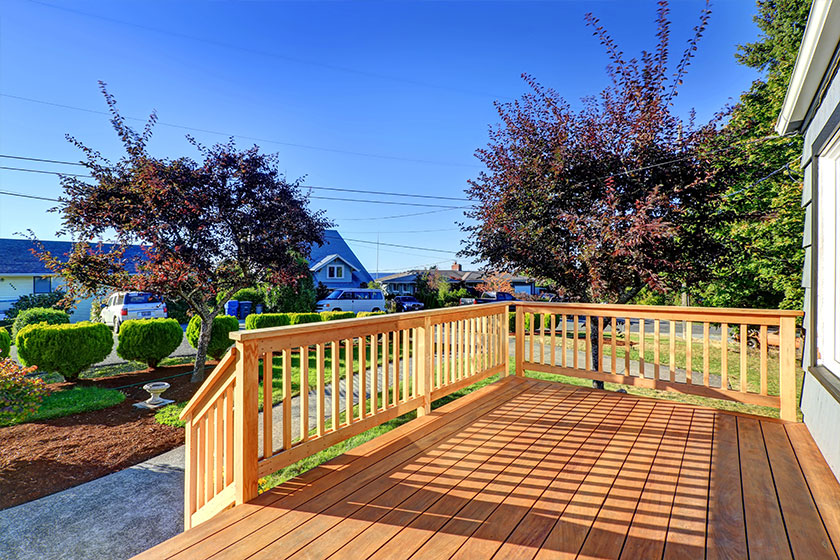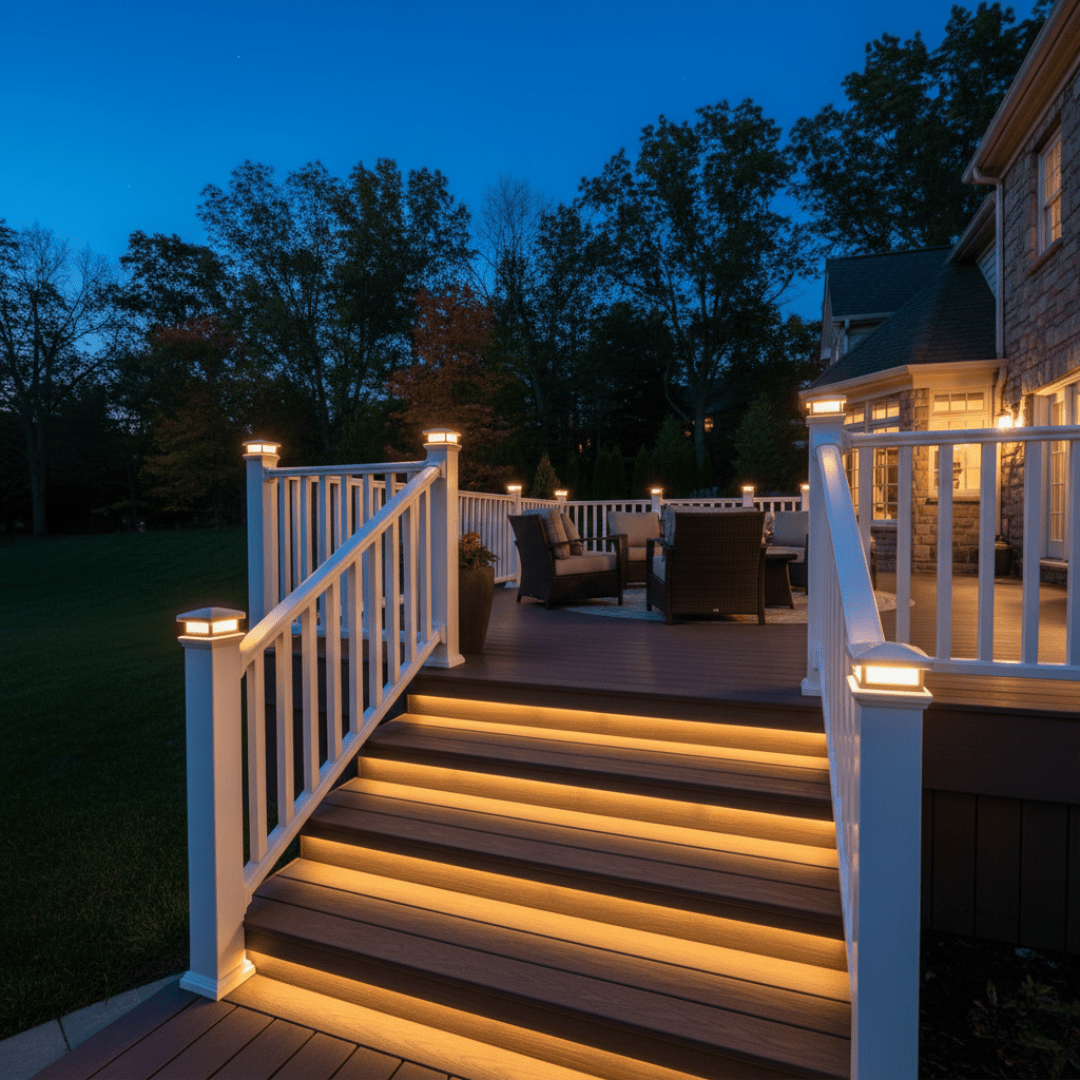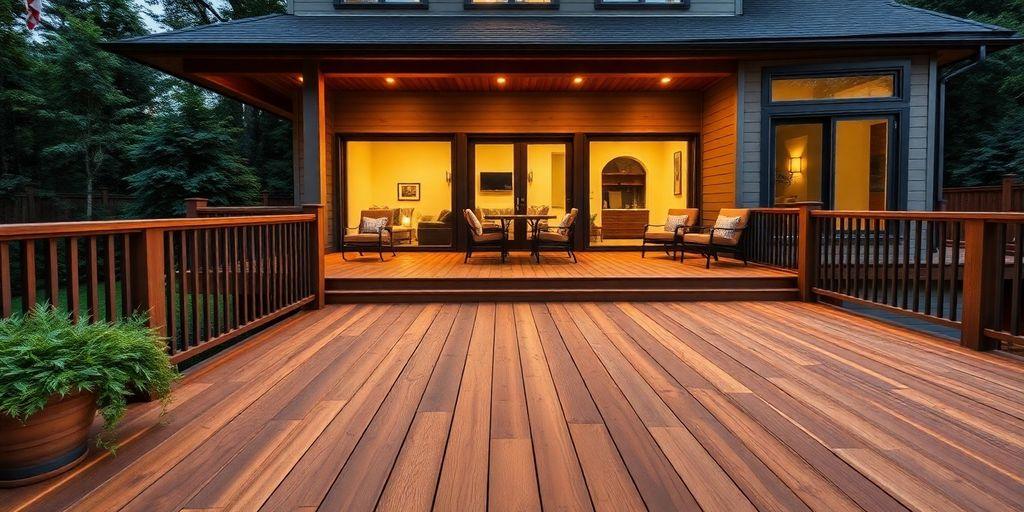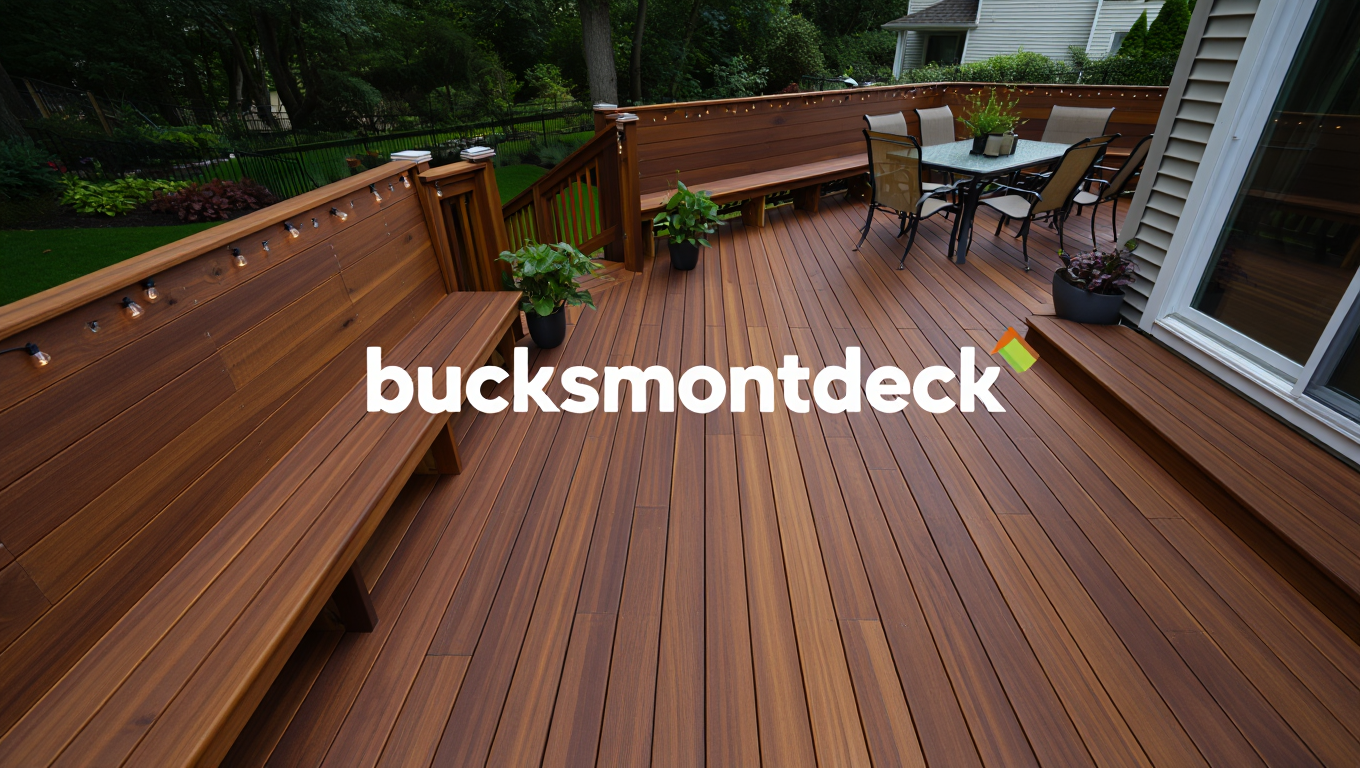Did you know that a well-designed deck can boost your home’s value by up to 7% in Pennsylvania? Whether you’re dreaming of summer barbecues or quiet evenings under the stars, planning your dream deck is the first step to transforming your backyard into a functional, beautiful space. In this guide, you’ll discover a clear, step-by-step process to plan your deck, avoid common pitfalls, and create an outdoor area that suits your lifestyle and budget. Let’s dive into everything you need to know to bring your deck vision to life.
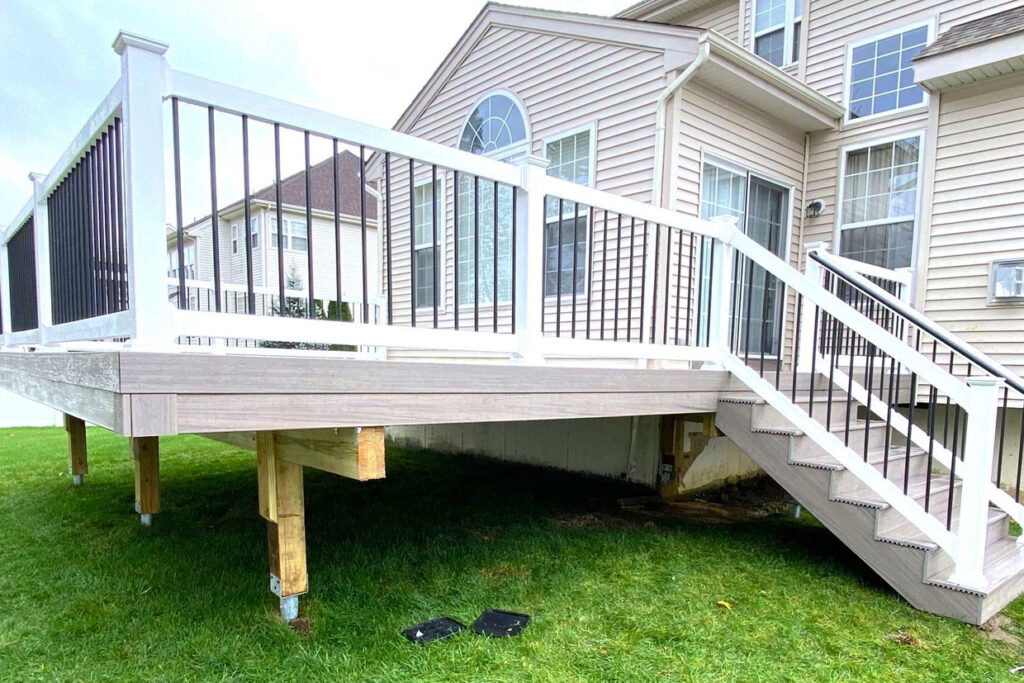
Why Planning Your Deck Matters
A deck is more than just a platform—it’s an extension of your home. Proper planning ensures your deck is safe, durable, and tailored to your needs. Without a solid plan, you risk overspending, violating local codes, or ending up with a space that doesn’t work for you. By following this comprehensive deck building guide, you’ll save time, money, and headaches while creating a space you’ll love for years. According to the National Association of Home Builders, proper planning also enhances deck safety, reducing risks like structural failures.
Step 1: Define Your Deck’s Purpose
Start by asking yourself: What do I want this deck to do? Your deck’s purpose will shape its size, layout, and features. Here are some common uses homeowners in Pennsylvania consider:
- Entertaining: Need space for a grill, dining table, or outdoor bar?
- Relaxation: Dreaming of a cozy spot for reading or stargazing?
- Family Time: Want a safe area for kids to play or pets to roam?
- Multifunctional: Planning to mix dining, lounging, and gardening?
For example, if you love hosting, you might prioritize a spacious deck with room for seating. If relaxation is your goal, a smaller, secluded deck with built-in benches might be perfect. Write down your top priorities to guide the rest of your planning.
Step 2: Assess Your Space
Next, head outside and evaluate your backyard. The size, shape, and features of your property will influence your deck’s design. Consider these factors:
- Available Space: Measure the area where you want the deck. A typical deck ranges from 200 to 500 square feet, but even small yards can accommodate compact designs.
- Terrain: Is your yard flat, sloped, or uneven? Sloped yards may require elevated decks or multi-level designs.
- Sun and Shade: Notice where sunlight hits during the day. You might want a pergola for shade or a sunny spot for lounging.
- Access: How will you get to the deck? Plan for easy access from your home, like a sliding door or patio.
Pro tip: Use string and stakes to outline your deck’s footprint. Walk around it to visualize the size and flow. This simple trick helps you spot issues early, like cramped spaces or awkward layouts.
Step 3: Set a Realistic Budget
Deck costs in Pennsylvania vary widely, from $5,000 for a basic design to $20,000+ for custom-builds with premium materials. Your budget will dictate your deck’s size, materials, and features. Here’s a quick breakdown of average costs to help you manage deck building costs:
| Deck Feature | Estimated Cost |
| Basic Wood Deck (200 sq ft) | $5,000–$10,000 |
| Composite Deck (200 sq ft) | $8,000–$15,000 |
| Multi-Level Deck | $12,000–$20,000+ |
| Add-Ons (Railings, Lighting) | $500–$5,000 |
To set your budget, consider:
- Materials: Wood (like pressure-treated pine) is affordable but requires maintenance. Composite or PVC decking is pricier but low-maintenance.
- Labor: Hiring professionals, like Bucks Mont Decks, ensures quality but adds to costs. DIY can save money but requires skills and time.
- Extras: Features like built-in seating, lighting, or a fire pit add up quickly.
Be sure to include a 10–15% buffer for unexpected expenses, like permits or site preparation. Get quotes from local contractors to refine your numbers.
Step 4: Choose the Right Materials
Your deck’s material affects its look, durability, and upkeep. Here’s a comparison of popular options for Pennsylvania homeowners:
| Material | Pros | Cons |
| Pressure-Treated Wood | Affordable, widely available | Requires regular staining/sealing |
| Cedar/Redwood | Naturally rot-resistant, attractive | Higher cost, needs maintenance |
| Composite Decking | Low-maintenance, long-lasting | Expensive upfront |
| PVC Decking | Weather-resistant, no staining needed | Premium price, can feel less “natural” |
For Pennsylvania’s humid summers and cold winters, you can explore composite decking for its durability and minimal upkeep, as noted by the Composite Decking Manufacturers Association. If you prefer the classic look of wood, cedar offers natural beauty but needs annual sealing to withstand moisture. Visit BucksMont Decks to explore material options and see real examples of local projects.
Step 5: Design Your Deck’s Layout
Now comes the fun part—designing your deck! Think about shape, levels, and features that match your vision. Common deck shapes include:
- Rectangular: Simple, versatile, and budget-friendly.
- L-Shaped: Great for wrapping around corners or creating zones (e.g., dining and lounging).
- Multi-Level: Ideal for sloped yards or adding visual interest.
Incorporate features like:
- Railings: Required for decks over 30 inches high. Choose wood, composite, or glass for style.
- Stairs: Ensure safe, wide steps for easy access.
- Built-Ins: Benches, planters, or storage save space and add charm.
Use online design tools or consult a professional to create a 3D rendering. BucksMont Decks offers free consultations to help you visualize your layout and avoid costly mistakes.
Step 6: Check Local Regulations
Before you start building, confirm your deck complies with Pennsylvania construction codes. Most towns require permits for decks over 30 inches high or larger than 200 square feet. Contact your local zoning office to navigate building codes and:
- Verify setback rules (how far your deck must be from property lines).
- Confirm height and railing requirements.
- Schedule inspections during construction.
Failing to secure permits can lead to fines or forced removal of your deck. A trusted contractor like BucksMont Decks can handle permitting for you, ensuring compliance with local regulations.
Step 7: Plan for Maintenance
Every deck requires some upkeep to stay safe and attractive. Your maintenance plan depends on your material choice:
- Wood Decks: Clean annually and stain/seal every 1–2 years to prevent rot and fading.
- Composite Decks: Wash with soap and water yearly; no sealing needed.
- PVC Decks: Minimal care—just occasional cleaning.
Budget for maintenance costs and time. For example, staining a 300-square-foot wood deck costs $200–$500 every few years. Choosing low-maintenance materials can save you effort in the long run.
Step 8: Hire a Professional or DIY?
Deciding whether to build your deck yourself or hire trusted local deck builders depends on your skills, time, and budget. Here’s a quick comparison:
| Option | Pros | Cons |
| DIY | Saves money, satisfying project | Time-intensive, risk of errors |
| Professional | Expert craftsmanship, faster completion | Higher cost |
For most Pennsylvania homeowners, hiring a local expert like BucksMont Decks ensures a high-quality, code-compliant deck. Professionals also offer warranties, giving you peace of mind. If you go DIY, invest in quality tools and follow a detailed deck building guide to avoid mistakes.
Step 9: Add Personal Touches
Make your deck uniquely yours with finishing touches. Consider:
- Lighting: String lights, post caps, or recessed LEDs for ambiance and safety.
- Furniture: Weather-resistant tables, chairs, or loungers for comfort.
- Accessories: Planters, rugs, or a fire pit to enhance the vibe.
For example, a cozy fire pit can turn your deck into a year-round gathering spot, even during chilly Pennsylvania evenings. Browse BucksMont Decks’ gallery for inspiration on custom features that elevate your space.
Common Deck Planning FAQs
How long does it take to plan and build a deck?
Planning typically takes 2–4 weeks, including design and permits. Construction can take 1–3 weeks, depending on size and complexity.
What’s the best deck size for a small yard?
A 100–200 square foot deck works well for small yards, offering space for seating and a grill without overwhelming the space.
Do I need a permit for a ground-level deck?
In Pennsylvania, decks under 30 inches high often don’t require permits, but always check with your local zoning office.
How can I make my deck eco-friendly?
Use sustainable materials like reclaimed wood or composite decking made from recycled plastic. Add solar-powered lighting for energy efficiency.
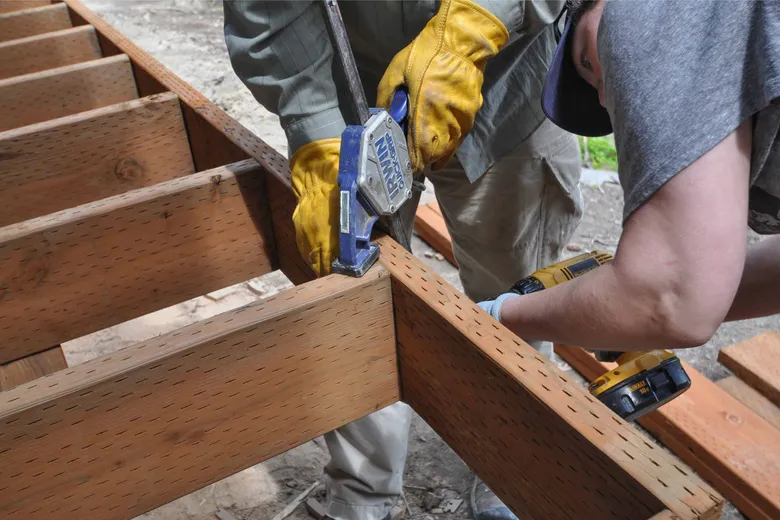
Conclusion: Start Planning Your Dream Deck Today
Planning your deck is an exciting journey that turns your backyard into a space for memories, relaxation, and fun. By defining your purpose, assessing your space, setting a budget, and choosing the right materials, you’ll create a deck that’s both practical and beautiful. Don’t forget to check local regulations, plan for maintenance, and add personal touches to make it your own. With this step-by-step deck building guide, you’re ready to take the first step toward your dream outdoor space.
Ready to get started? Share your deck ideas in the comments below or get a free deck estimate from BucksMont Decks. Let’s build a deck you’ll love for years to come!

